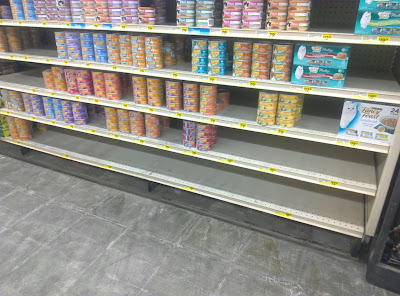 Parler
Parler Gab
Gab
Global food prices keep climbing
As the food prices continue to climb, they hit a fresh decade high in October, according to a report by the United Nations Food and Agriculture Organization (FAO). The FAO index climbed for a third straight month, jumping another three percent from the previous month to reach its highest since July 2011. Higher food prices are felt by everyone, but it is particularly harder on poorer households that need to shell out more of their income to keep their families fed. In the U.S., special offers are already being reined in as everyday prices begin to rise. Energy drinks, eggs, meat and soda are all getting more and more expensive. When food prices go up, consumers tend to change their habits by switching out pricier products for cheaper ones or substituting meat in meals with more affordable carbohydrates like pasta or rice. Others come with bulk buying or crowdsourcing. With prices continuing to soar, it will not be surprising to see people get together to buy large packs of food and supplies to get better deals. A little inflation can sometimes be good for business as it elevates the overall value of sales, but it can be dangerous when it exceeds manageable levels. October's gains in the FAO food price index, for instance, were led by vegetable oils as prices increased 9.6 percent in October alone, a new all-time high from the previous month. High cereal prices in particular stand to impact most heavily on emerging economies that combine elevated household spending on food with the high dependence on imports. Nigeria, for instance, is already experiencing widespread constraints on household purchasing power and food access. Costa Rica saw a 34.8 percent higher increase in cereal imports in the first five months of the year compared to the same period in 2020, while import volumes only rose by five percent. Prices of maize and rice also increased. Meat prices eased for the third consecutive month, led by falling pork prices due to the reduced purchases from China. Falling beef prices were also triggered by the mad cow disease concerns from Brazil. Meanwhile, sugar prices fell 1.8 percent in October, the first decline after six straight months of gains. Learn more about the food price surge at Bubble.news. Sources include: TheEconomicCollapseBlog.com EconomicTimes.IndiaTimes.com AlJazeera.com OxfordBusinessGroup.comDeborah Birx hid covid info from Trump, altered CDC guidelines without approval
By Ethan Huff // Share
By Mary Villareal // Share
Americans lining up outside food banks as record inflation continues
By Belle Carter // Share
Governments continue to obscure COVID-19 vaccine data amid rising concerns over excess deaths
By patricklewis // Share
Tech giant Microsoft backs EXTINCTION with its support of carbon capture programs
By ramontomeydw // Share
Germany to resume arms exports to Israel despite repeated ceasefire violations
By isabelle // Share










